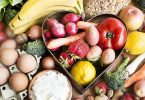We’re always looking for new ways to keep sickness and anxiety at bay. While eating a well-balanced diet is certainly part of the process, Ayurveda offers a unique way to boost your health both physically and mentally. By eating for your doshas, you may be able to bring more balance to your life.
What are doshas?
Ayurvedic medicine focuses on prevention to maintain physical and mental health through lifestyle routines and diets specific to a person’s doshas. Doshas are the three energies in our bodies: Vata, Pitta and Kapha. They change with stress, the season, illness or other life changes. Each dosha has a specific “personality” that can provide insight into how our bodies might be unbalanced.
There’s a biological and an emotional component to each dosha, manifesting in both physical and mental ways. For instance, it’s believed that if the Pitta energy in one’s body is out of balance, you will be quicker to anger, and you could experience inflammation in the form of skin rashes or intestinal issues.
Vata dosha
The Vata dosha is understood to be the energy that is associated with motion in the body: heartbeat and other cardiovascular functions, breathing and even blinking the eyes. When it’s in balance, it is said that you experience vitality and creativity. When there is too much Vata energy, you may experience anxiety.
This dosha is cold and dry. As such, Vata-dominant people thrive in warmer climates. Vata people should strive to keep physically warm and maintain a consistent daily routine to balance out the always-changing qualities of the dosha.
Pitta dosha
The Pitta dosha governs the metabolism including the digestive system and the way the body regulates its temperature. When one’s Pitta dosha is balanced, they are content, but when it is out of balance, it is believed that Pitta will cause anger and ulcers in the gut.
Pitta-dominant people are fiery individuals, fueled by this hot dosha. They can endure the cold weather better than Vita or Kapha people, and they are noted for their intellect, sharpness and impatience. Pitta-forward people should exercise in the cooler parts of the day and avoid situations when conflict is likely to occur. Contemplative practices like meditation are also beneficial to individuals with strong Pitta.
Kapha dosha
Finally, the Kapha dosha is the energy associated with growth. It maintains the immune system, keeps moisture in the skin and hydrates all parts of the body. When in balance, Kapha helps promote forgiveness and love; when out of balance one can feel envious or insecure.
Individuals who are Kapha-dominant tend to have earthier body types and retain water. They gain weight easily but often have beautiful, smooth skin. They’re typically the most calming people to be around.
How do I know which of my doshas is dominant?
There are a number of quizzes online that will help you determine which dosha is dominant in your body. Generally speaking, the longer and more extensive the quiz, the better. Holistic Online has an in-depth quiz designed to help you identify your dominant dosha, as does the Chopra Center. Once you know your dosha type, you can begin structuring your meals with it in mind.
Vata diet
To balance out Vata energy, partake of warm and heavy food. Salty, sweet or sour tastes are also beneficial for Vata-dominant people. Hot teas, spicy foods, warm milk and ripe foods are also recommended. Butternut squash soup, roasted green beans, chickpeas, seafood and poultry — in small quantities — are go-to foods perfect for balancing out Vata.
Pitta diet
If you’re Pitta-dominant, you may throw your dosha out of balance by eating too much spicy, oily food or drinking too much alcohol. Rebalancing this dosha with foods includes eating cool or warm — but not hot — entrees. Eating cool, refreshing foods in the summer can also keep this hot dosha in balance. Cool vegetables like cucumber, zucchini and sweet green peppers, coconut oil, ghee, barley, oats and poultry are said to be good for balancing Pitta.
Kapha diet
Kapha people should keep their diet warm and light. Dry food cooked without too much water and a minimum amount of butter or sugar should help balance this dosha. Because of its slower energy, stimulating foods with bitter tastes or strong flavors should be eaten to bring balance to the body and mind. Grains including barley, oats and basmati rice, shrimp, chicken or turkey, and raw, unheated honey are said to be best for Kapha-dominant people. Sautéed kale with onions, brussels sprouts with cranberries or shrimp with corn grits are excellent foods to awaken the sleepy Kapha.
Each person possesses all three doshas and, as with anything in the body, the environment changes how they interact. Next time you feel under the weather or anxious, check in with yourself. Are you eating properly for your dominant dosha? If not, then a few minor adjustments may help bring your body and mind back into line.
What’s your dosha type?
— Megan Winkler







